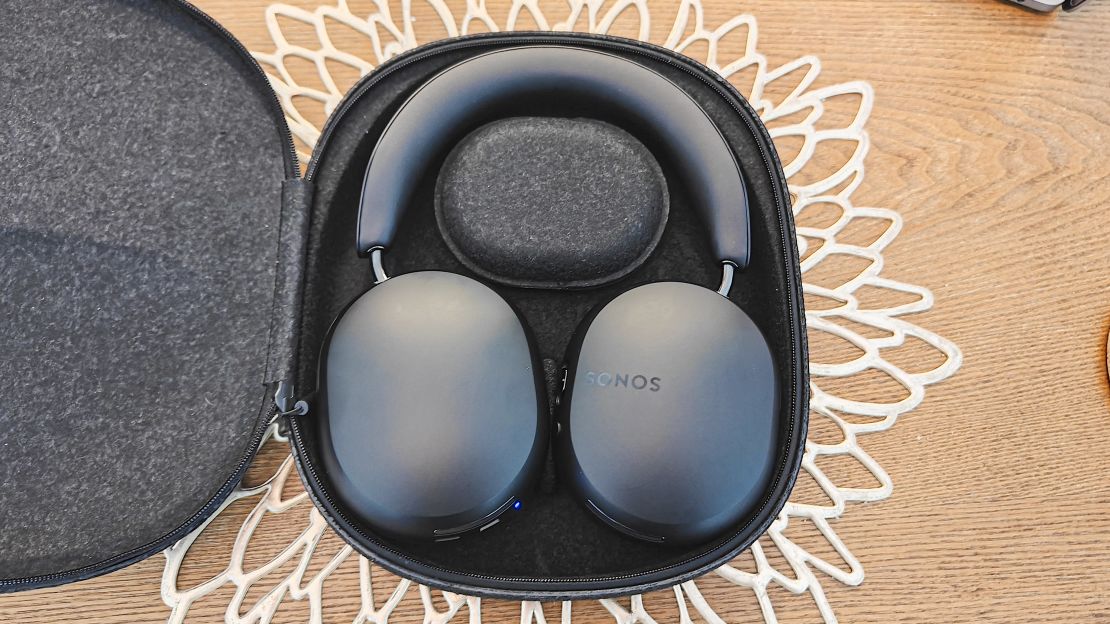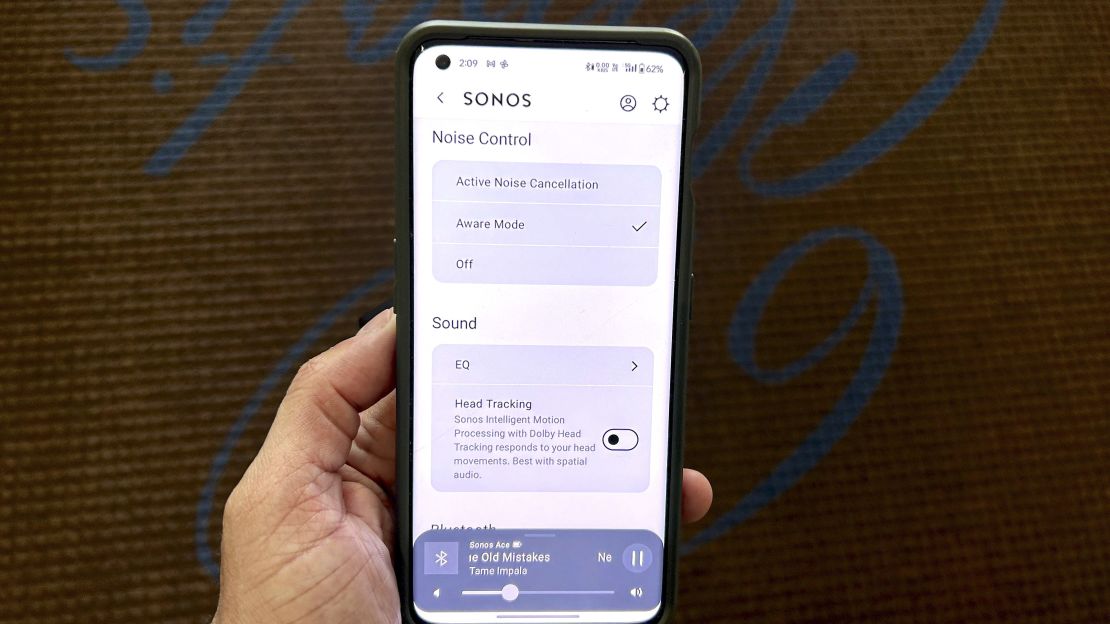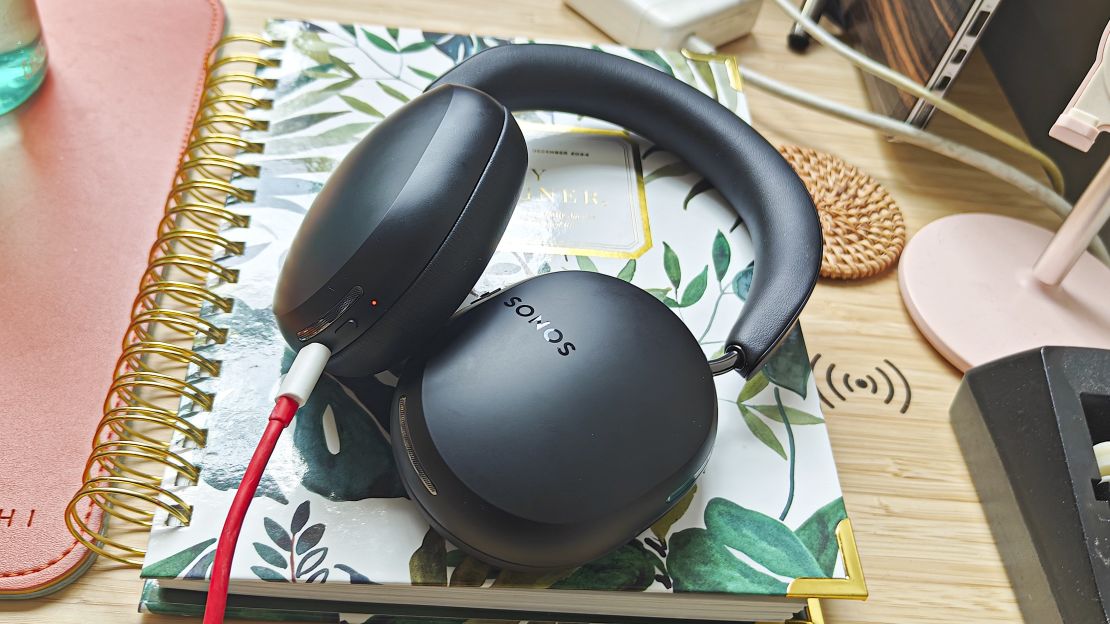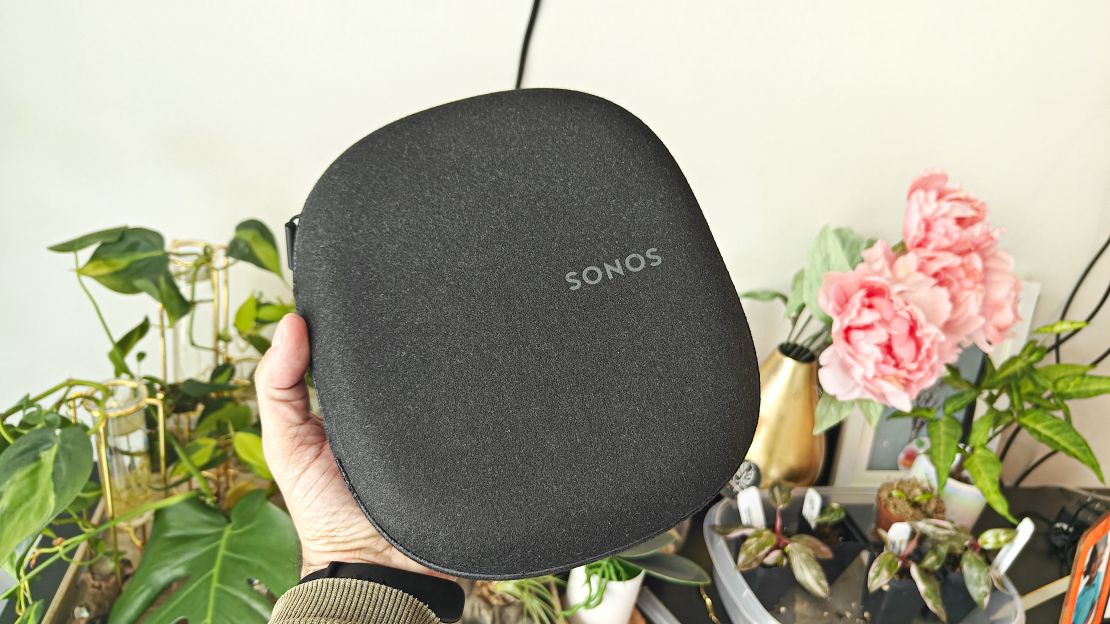After years of anticipation, Sonos’ debut headphones have finally launched. Meet the Sonos Ace.
These fancy cans from the acclaimed wireless home theater system manufacturer take on many Sonos hallmarks, including elite craftsmanship, remarkable sound quality and seamless connectivity with the brand’s latest soundbars. Upscale features such as active noise cancellation (ANC), high-end audio support and spatial audio with Dolby Atmos add to their flair and help justify their steep price tag.
But as beautiful as these headphones look and sound, they aren’t as accommodating as many of the best over-ear headphones, and they have some functional blemishes.
Sonos users will find the Ace to be a worthy pickup; others may not. See why.
Impeccable ecosystem integration and striking sound in a gorgeous package make the Sonos Ace a noteworthy debut.
What I liked about them

Great sound quality with advanced audio technologies
Let’s start by breaking down the Ace’s default sound signature. It’s detailed, nicely balanced and vibrant. Midrange reproduction ranks among the best in the category. Bass is deep and highs are rich.
The bright electric guitar and infectious synths on Lucky Daye’s “HERicane” sounded as compelling as they did on audiophile models like the Bowers & Wilkins PX8. Vocal clarity was equally satisfying and had me belting out the passionate chorus in private. Bangers like Tame Impala’s “New Person, Same Old Mistakes” retained their monstrous bass presence with minimal distortion. The tinny hi-hats on Empire of the Sun’s “Walking on a Dream” were crystal clear over the emphatic kick drums. Even orchestral-heavy recordings sounded serene. Press play on John Coltrane’s “Blue Train” and you’ll fawn over the masterful blend of lively horns, snappy double bass and transparent cymbals.
ANC gives bass a significant boost; turning it off does the opposite. There’s an EQ in the Sonos app to customize sound. The Loudness setting is useful for making bass and treble more effective at low volume.
High-end audio codes like AAC (iOS/macOS) and SBC (Android) run smoothly and produce stable playback on the best music streaming services. Qualcomm’s aptX Adaptive/Lossless is the default on most current Android devices and does a fantastic job of dynamically scaling Bluetooth audio to divulge more nuance in recordings. Tidal tracks offer unbeatable performance, and the platform’s desktop features help enhance output when in wired mode.
The included aux cable and USB-C cable get you lossless audio on compatible devices. I was happy with the results, granted the midrange was overemphasized on several tracks.
Sonos’ 3D sound format is superb and supports dynamic head tracking to create an encapsulating virtual soundscape. The spatial audio content on Apple Music and Apple TV sounded natural and immersive. Motion detection was accurate.
Sonos developed two exclusive features for the Ace. The first is TV Audio Swap to switch audio between a Sonos soundbar and the wireless headphones. Then there’s TrueCinema, which uses a Sonos soundbar to map out your space and optimize the Ace’s acoustics to your room. Bear in the mind that the latter is currently unavailable.
A sleek and stylish design

Sonos speakers are some of the chicest home products that also double as fancy decor. The Ace are no different. Placing them on a headphone stand in the middle of your living room will earn you cool points.
Their clean and minimalist appearance is on brand. Refined materials like the dark aluminum yokes and plush leather padding on the headband and ear pads make for a comfy, well-fitting design. The sleek matte finish and slim microphone grilles are nice touches too. Sonos showed some creativity with its control setup. On the right ear cup is a content key, which we previously described in our hands-on preview as offering “springy, tactile feedback every time you move the slider up or down to control volume and a satisfying click when you press it to pause or play.” There’s also a button to enable ANC/voice control and a button for power/pairing.
The slim carry case is handsomely crafted. Sonos says it’s built from 75% recycled plastic bottles, but the felt material on the outside feels premium. The headphones sit nicely in their groove, and the separate felt pocket conveniently stores all accessories without taking up extra space.
Intuitive ecosystem integration

As our senior tech editor Mike Andronico stated in his early impressions, “The whole hook of Sonos products is that they work seamlessly with your other Sonos products.” The Sonos ecosystem allows the Ace to work with your Sonos home theater thanks to features like TV Audio Swap and TrueCinema. I don’t own a Sonos speaker; therefore, I can only defer to my editor’s hands-on wireless experience, which he described as spot-on.
Based on our early impressions, TV Audio Swap seems serviceable for watching blockbuster films and sports events alone after the family hits the sack. Sound quality isn’t compromised, and it “certainly seems more convenient than having to manually pair and re-pair things once it’s time to put headphones on,” per Andronico. TrueCinema is the Ace’s killer feature and creates a personal 3D sound profile for the headphones by having your Sonos bar map out your listening environment. It sounds promising and could end up being a huge selling point when released in the coming weeks.
As of launch, the Sonos Arc is the only device to support these two features, but a future software update is said to bring them to the Beam (Gen 2), Beam and Ray.?
Outside of the Sonos platform, the Ace work well with iOS/macOS and Android devices. Apple MFi and one-tap Google Fast Pair deliver instantaneous pairing no matter what phone you have. Multipoint technology is also on board to pair the headphones with two audio sources simultaneously.
Something else to keep in mind is that the Ace don’t come with Wi-Fi compatibility, nor do they need to be set up through the Sonos app, granted the latter does help when troubleshooting and places a few features at your fingertips.
Adequate noise cancellation and call quality
The Ace are nowhere near the noise-canceller that the Bose QC Ultra or Sony WH-1000XM5 are. You can throw the AirPods Max up there too. However, these noise-canceling headphones block out a huge amount of incidental sound. I found the technology useful for silencing common household distractions like kitchen appliances and TVs as well as some outdoor fracas. Loud noises such as construction tools and sirens caught my attention. Wind resistance was strong and kept the soundstage free of harsh whooshing effects. Aware mode was decent for keeping tabs on my environment, but the mics struggled with vocal capture.
What I didn’t like about them

Battery life is lower than advertised
Sonos rates the Ace’s battery life at 30 hours with ANC on. This is equal to the WH-1000XM5 and several hours longer than the QC Ultra (24 hours) and AirPods Max (20 hours). My testing showed different results. There was a three-hour drop when using ANC. Spatial audio brought playtime down to about 20 hours. I’m just glad that Sonos gave these headphones some of the strongest quick charging in the category: A three-minute charge equals three hours of use.
A buggy companion app with very few features
There were times when the Sonos app occasionally froze or didn’t acknowledge the headphones being paired to my smartphone. When recognized, the app provided access to a limited number of perks: a battery level indicator, EQ and toggle controls for all the main functions.
Furthermore, the EQ is mediocre and limits adjustments to bass, treble and balance output between each channel. Sonos should have developed multiple EQs, much like every other competitor does. We also ran into an issue in which a software update that was meant to be a 10-minute download took more than two hours to complete; we’ve reached out to Sonos about this error and will update this review when we hear back.
You need a Sonos soundbar for the full audio experience
The Ace’s coolest sound features are tied to the Sonos platform and they only work with the Sonos soundbar at the moment: the Arc. These perks will eventually make their way to the Beam and Ray soundbars, but if you don’t currently have a Sonos soundbar in your home, you’ll simply get less functionality out of these cans.
Too pricey
It would have been in Sonos’ best interest to launch the $449 Ace at a more competitive price point, but the company didn’t. These headphones are more expensive than the $399 QC Ultra and $399 WH-1000XM5, two of the best noise-canceling headphones that are frequently on sale. The Ace do have a lower retail price than Apple’s $549 AirPods Max, but those headphones also see frequent discounts to as low as $429.
Bottom line

I’m not a Sonos guy, but I can appreciate the value these headphones would provide to those heavily invested in the company’s smart wireless audio ecosystem. Sound quality is up there with top-tier performers like the Sony WH-1000XM5. Active noise cancellation is also impressive.
Are the Ace headphones a game changer? No. Are they worth the price? Only if you’re a Sonos user. Everyone else can pick up Bose or Sony’s flagship headphones and receive stronger ANC and special features for much less.
But, again, Sonos loyalists can breathe easy knowing they have headphones to call their own, and the Ace are stunning in both design and sound.

















